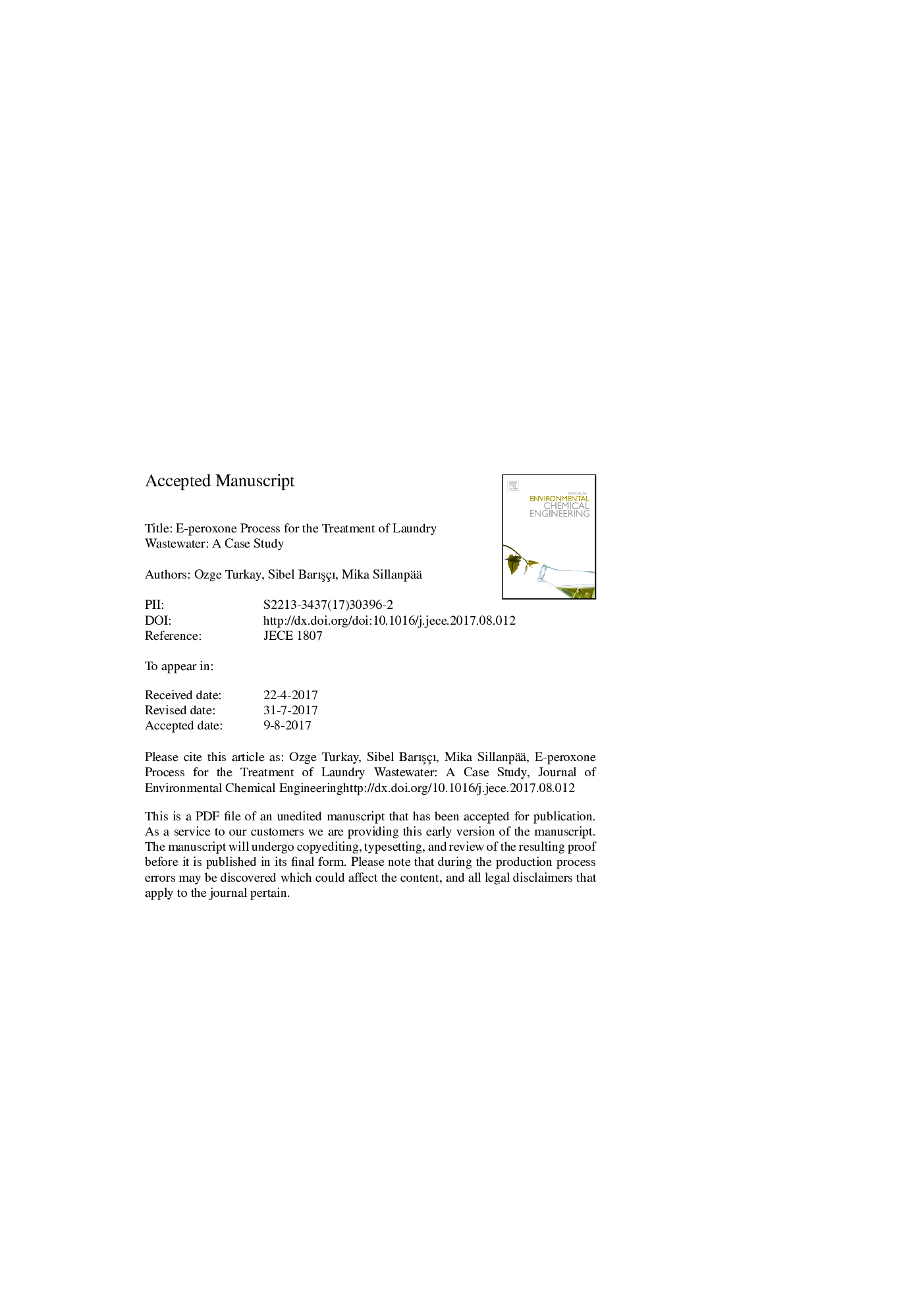| Article ID | Journal | Published Year | Pages | File Type |
|---|---|---|---|---|
| 6664256 | Journal of Environmental Chemical Engineering | 2017 | 40 Pages |
Abstract
The treatment of laundry wastewater by ozonation, electro-oxidation (EOX), electro-oxidation with oxygen sparging (EOX with O2 sparging) and the combined electro-peroxone (E-peroxone) process was investigated. E-peroxone process is based on the production of H2O2 electrochemically from O2 in sparged ozone generator effluent (O2 and O3 gas mixture) using carbon-polytetrafluorethylene (carbon-PTFE) cathodes. The electro-generated H2O2 then reacts with sparged O3 to produce OH. The concentration of H2O2 and OH was determined as â¼10 g L1â and 0.1567 μM in the E-peroxone process, respectively. While no OH was produced in EOX, the measured OH concentration was 0.1872 μM in the ozonation process, which is greater than E-peroxone. All advanced processes adopted in this study effectively removed turbidity. Although, E-peroxone was not highly effective in eliminating chemical oxygen demand (COD) from laundry wastewater, it removed almost 77% methylene blue active substance (MBAS), whereas EOX and ozonation processes removed 86% MBAS. Besides, anion concentration increased dramatically during E-peroxone treatment. This suggests that E-peroxone is insufficient to remove inorganics. Regarding the toxicity analysis, the lowest toxicity was observed in E-peroxone process as the inhibition rate was reduced to 22.45% from 80.64%. Moreover, specific energy consumption (SEC) values were calculated as 0.003, 0.079 and 0.067 kWh kgâ1 for EOX, ozonation and E-peroxone, respectively. Hence, E-peroxone was found to be more cost-effective than ozonation in this case. However, EOX was found to be the most cost-effective process for laundry wastewater treatment.
Related Topics
Physical Sciences and Engineering
Chemical Engineering
Chemical Engineering (General)
Authors
Ozge Turkay, Sibel BarıÅçı, Mika Sillanpää,
